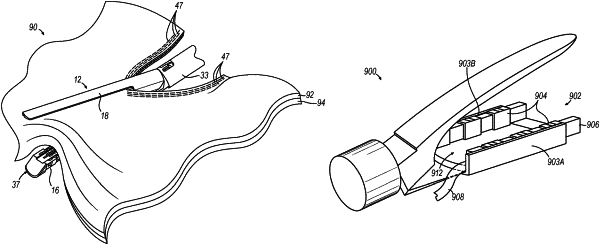| CPC A61B 34/30 (2016.02) [A61B 17/072 (2013.01); A61B 17/068 (2013.01); A61B 17/115 (2013.01); A61B 34/71 (2016.02); A61B 2017/00026 (2013.01); A61B 2017/00398 (2013.01); A61B 2017/07214 (2013.01)] | 20 Claims |

|
1. A surgical instrument comprising:
(a) an end effector configured to interact with in vivo material of a patient, the end effector comprising:
(i) a first jaw,
(ii) a second jaw configured to cooperate with the first jaw to clamp the in vivo material, and
(iii) a first electrode configured to directly contact and deliver an electrical signal to the in vivo material positioned between the first and second jaws;
(b) a second electrode configured to receive the electrical signal from the first electrode; and
(c) an electrical circuit housed within the end effector, wherein the electrical circuit includes a microcontroller and is configured to:
(i) control delivery of the electrical signal to the first electrode such that the electrical signal passes from the first electrode, through the in vivo material, to the second electrode,
(ii) determine, based on the electrical signal as received by the second electrode, an electrical impedance associated with the in vivo material, and
(iii) determine, based on the electrical impedance, at least one of:
(A) a presence of a tissue in the in vivo material,
(B) an absence of a tissue in the in vivo material, or
(C) a characteristic of a tissue forming at least a part of the in vivo material.
|